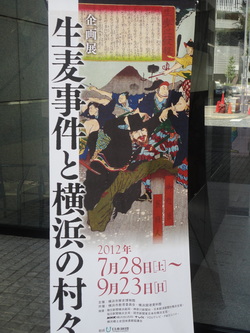Commodore Perry's forcible opening of Japan to the outside world in 1853-54 is not only of major historical importance but in the right hands would also be a fascinating story. Sadly this book is a great opportunity missed, with poor prose and poor selection and arrangement of material leading to a frustrating reading experience. There is some recovery in the last couple of chapters, with a thoughtful discussion of the ethics and legacy of the Perry mission following the inferior telling of the history, but oh what might have been!
The irritations start early and come at some pace. There are flat-out errors, such as "prototypes" for "protocols", and a bizarre map of the US in 1853 showing an independent Texas and the modern US Southwest as Mexican when this territory had all joined the Union in the 1840s. Then there are the numerous awkward sentences that obfuscate meaning, plus many unsupported points. As an example: "...along the four-hundred-odd miles of the Tokaido, the state-of-the-art highway between Edo and the ancient capital of Kyoto..." It seems inappropriate to use "state-of-the-art", a very modern term, to describe 19th century technology. And is the author saying that this was the most advanced road-building technology in Japan - in which case since the Tokaido was by several orders of magnitude the most important Japanese road this would be completely unsurprising - or the most advanced in the world, which would be a very interesting point but would require explanation? Alas, we shall never know.
There are also major structural flaws, with descriptions of the two protagonists, Perry and the leading Japanese official Abe, drip fed across many chapters so that a full feeling for these characters is only achieved if at all once well into the second half of the book. The discussion of the US motives for the mission is also drip fed and never really dealt with satisfactorily. But the decision to cover all four of Perry's visits to Okinawa in one chapter is perhaps the most disastrous, stripping the book of any narrative flow and denying the reader the ability to take the journey with Perry and his crewmen.
Only in the final two chapters does George Feifer hit his stride, with an original critique of the manner in which Perry carried out his task and of the impact the Black Ships had on Japan's political development. There is a great book to be written about the clash of cultures and great figures that took place in what is now Tokyo Bay in 1853-54, but this is not it.
The irritations start early and come at some pace. There are flat-out errors, such as "prototypes" for "protocols", and a bizarre map of the US in 1853 showing an independent Texas and the modern US Southwest as Mexican when this territory had all joined the Union in the 1840s. Then there are the numerous awkward sentences that obfuscate meaning, plus many unsupported points. As an example: "...along the four-hundred-odd miles of the Tokaido, the state-of-the-art highway between Edo and the ancient capital of Kyoto..." It seems inappropriate to use "state-of-the-art", a very modern term, to describe 19th century technology. And is the author saying that this was the most advanced road-building technology in Japan - in which case since the Tokaido was by several orders of magnitude the most important Japanese road this would be completely unsurprising - or the most advanced in the world, which would be a very interesting point but would require explanation? Alas, we shall never know.
There are also major structural flaws, with descriptions of the two protagonists, Perry and the leading Japanese official Abe, drip fed across many chapters so that a full feeling for these characters is only achieved if at all once well into the second half of the book. The discussion of the US motives for the mission is also drip fed and never really dealt with satisfactorily. But the decision to cover all four of Perry's visits to Okinawa in one chapter is perhaps the most disastrous, stripping the book of any narrative flow and denying the reader the ability to take the journey with Perry and his crewmen.
Only in the final two chapters does George Feifer hit his stride, with an original critique of the manner in which Perry carried out his task and of the impact the Black Ships had on Japan's political development. There is a great book to be written about the clash of cultures and great figures that took place in what is now Tokyo Bay in 1853-54, but this is not it.


 RSSフィード
RSSフィード
